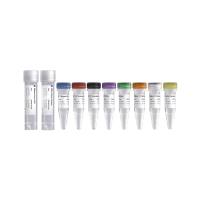Gel Mobility Shift Assays for RNA Binding Viral RNAi Suppressors
互联网
774
The host–virus interaction is a continuous coevolutionary race involving both host defence strategies and virus escape mechanisms. RNA silencing is one of the main processes employed by eukaryotic organisms to fight viruses. However, viruses encode suppressor proteins to counteract this antiviral mechanism. Virtually all plant viruses encode at least one suppressor. In spite of being highly diverse at the protein level, a large group of these proteins inhibit RNA silencing very similarly, by sequestration of double-stranded RNA or small-interfering RNA molecules, the central players of the pathway. The RNA binding capacity of virus suppressor proteins can be studied by the electrophoretic mobility shift assay method. Also known as gel retardation assay, gel mobility assay, gel shift assay or band shift assay, EMSA is an in vitro technique used to characterize protein:DNA or protein:RNA interactions. The method had been developed based on the observation that protein: nucleic acid complexes migrate slower through a non-denaturing polyacrylamide gel than the free nucleic acid fragments. Here, we provide a detailed protocol for the analysis of crucifer-infecting Tobacco mosaic tobamovirus (cr-TMV) silencing suppressor protein p122 RNA binding capacity.









